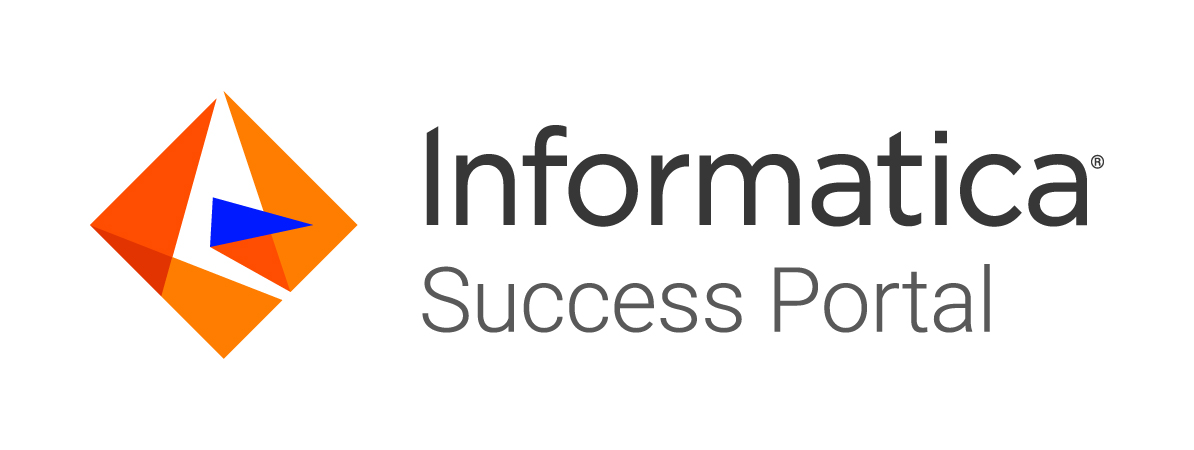-
Manage your Success Plans and Engagements, gain key insights into your implementation journey, and collaborate with your CSMsSuccessAccelerate your Purchase to Value by engaging with Informatica for Customer SuccessAll your Engagements at one place
-
A collaborative platform to connect and grow with like-minded Informaticans across the globeCommunitiesConnect and collaborate with Informatica experts and championsHave a question? Start a Discussion and get immediate answers you are looking forCustomer-organized groups that meet online and in-person. Join today to network, share ideas, and get tips on how to get the most out of Informatica
-
Troubleshooting documents, product guides, how to videos, best practices, and moreKnowledge CenterOne-stop self-service portal for solutions, FAQs, Whitepapers, How Tos, Videos, and moreVideo channel for step-by-step instructions to use our products, best practices, troubleshooting tips, and much moreInformation library of the latest product documentsBest practices and use cases from the Implementation team
-
Rich resources to help you leverage full capabilities of our productsLearnRole-based training programs for the best ROIGet certified on Informatica products. Free, Foundation, or ProfessionalFree and unlimited modules based on your expertise level and journeySelf-guided, intuitive experience platform for outcome-focused product capabilities and use cases
-
Library of content to help you leverage the best of Informatica productsResourcesMost popular webinars on product architecture, best practices, and moreProduct Availability Matrix statements of Informatica productsMonthly support newsletterInformatica Support Guide and Statements, Quick Start Guides, and Cloud Product Description ScheduleEnd of Life statements of Informatica productsMonitor the status of your Informatica services across regions
Bulk import and export into EDC
Share On:
Description
Bulk import and export features in EDC to perform various procedures such as curation of business terms, data domains, certifying or decertifying assets, etc in bulk.
Users can export the assets, reference assets, child assets, custom attributes, system attributes, business terms, and data domains to the comma-separated values(CSV) file and import the CSV file back into the Enterprise Data Catalog.
Users can export assets from the Resource Overview tab, Asset Overview tab, or Search Results Page.
- Resource Overview Tab: The Catalog exports specific assets in the resource, custom attributes that are configured for assets in the resource, reference assets, business terms, and data domains. The CSV file includes reference assets if you export a resource that contains reference assets or export a reference resource.
- Asset Overview Tab: The Catalog, by default, exports the asset, custom attributes that are configured for the asset, child assets, business terms, and data domains. The CSV file includes child assets if you export data assets, such as tables, views, synonyms, and public synonyms. You can export a maximum of 200000 assets.
- Search Results Page: The Catalog, by default, exports all the assets that appear in the search results page, custom attributes that are available in the Catalog, business terms, and data domains. You can export assets after you refine the search results on the search results page. You can export a maximum of 200000 assets.
Customer Pre-Requisites
- Knowledge of EDC UI
- Access to the EDC Catalog tool.
Self-Service Resources
Goals
- To smooth the business process.
- Quickly tag the attributes.
- Helping Analyst to understand the technical terms.
Business/Technical Outcomes
- Understand overall process involved in import and export features of the EDC.
Required Roles/Personas
- Developer
Engagement Details
Catalog Type
Ask An Expert
Engagement Category
Feature Clarity
Products
Enterprise Data Catalog
Engagement Type
Ask An Expert
Adoption Stage
Implement
Focus Area
Adoption - Technical
Functional
Engagement ID
AAE-EDC-005
Disclaimer
- All the topics covered in the Success Accelerators/Ask An Expert sessions are intended for guidance and advisory only. This is implicit and it will not be called out under the scope of each engagement.
- Customers need to include their relevant technical/business team members highlighted in each engagement topic to derive the best out of each engagement.
- Customers need to perform any hands-on work by themselves leveraging the guidance from these engagements.
- Customers need to work with Informatica Global Customer Support for any product bugs/issues and troubleshooting.
